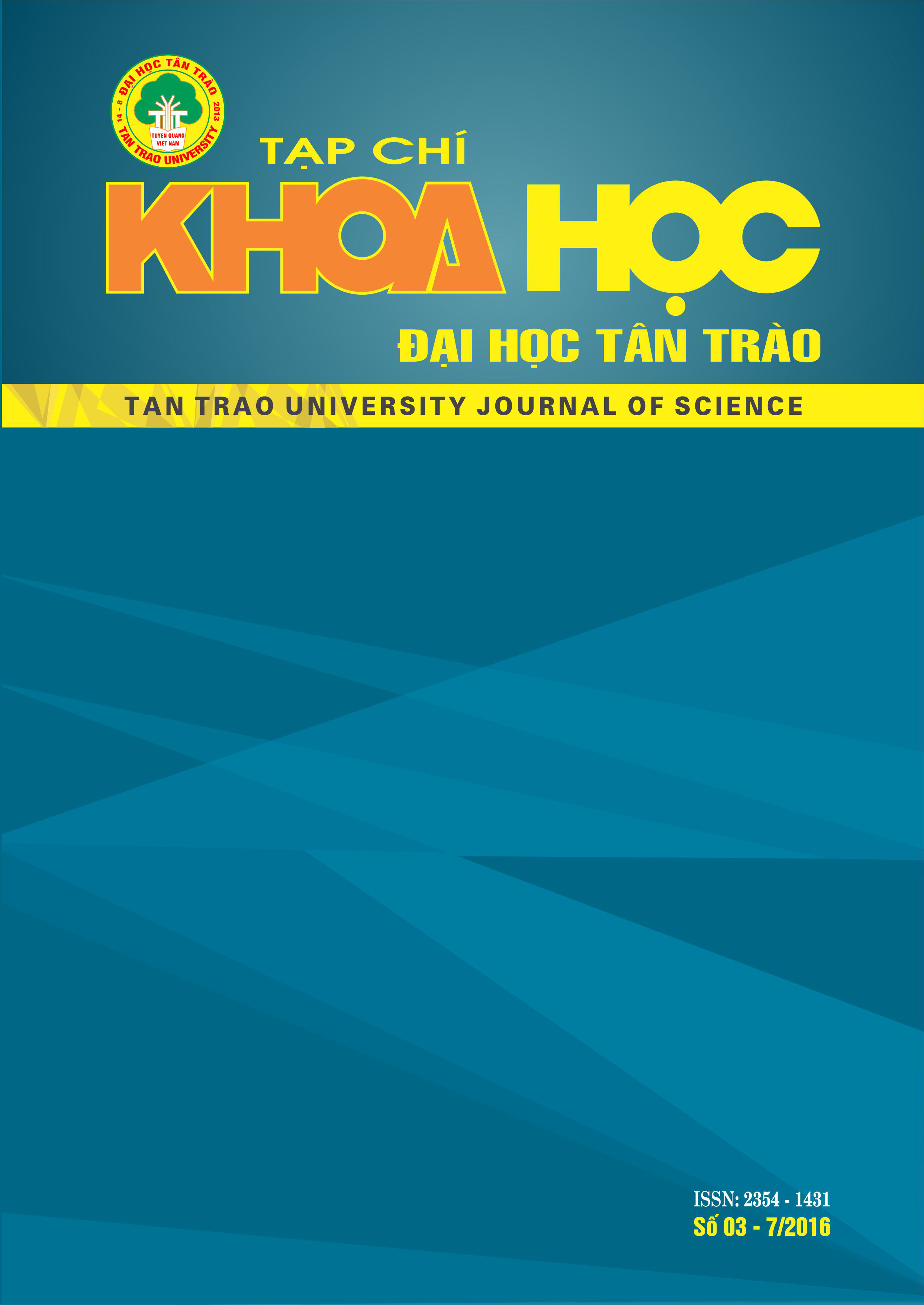SỰ KHÁC BIỆT CỦA YẾU TỐ LIÊN VĂN BẢN TRONG SÁNG TÁC CỦA HỒ ANH THÁI VÀ HARUKI MURAKAMI
DOI:
https://doi.org/10.51453/2354-1431/2016/68Từ khóa:
Liên văn bản, thể loại, văn hóa, tác phẩm văn há»c, Hồ Anh Thái, Haruki MurakamiTóm tắt
Liên văn bản là thuật ngữ cơ bản, phổ biến của chủ nghĩa hậu hiện đại. Hai nhà văn Hồ Anh Thái và Haruki Murakami đều sử dụng yếu tố liên văn bản trong trong sáng tác của mình. Tuy nhiên cách xử lý của mỗi người có những điểm khác biệt thú vị. Cả hai tác giả đều chịu ảnh hưởng văn hóa phương Đông và phương Tây, nhưng ở những sáng tác của Murakami ảnh hưởng phương Tây sâu đậm hơn. Sự thu nạp những thể loại trong một tác phẩm văn học cũng tùy thuộc vào mục đích của mỗi nhà văn. Mặc dù vậy, họ đã diễn đạt thật hiệu quả về con người và bức tranh hiện thực hỗn độn thời hậu hiện đại qua các yếu tố liên văn bản.
Tải xuống
Tài liệu tham khảo
1. Đào Tuấn Ảnh, Lại Nguyên Ân, Nguyễn Thị Hoài Thanh (Biên soạn) (2003), Văn học hậu hiện đại thế giới – Những vấn đề lí thuyết, NXB Hội Nhà văn, Hà Nội;
2. Trương Đăng Dung (2004), Tác phẩm văn học như là quá trình, Nxb Khoa học xã hội, Hà Nội;
3. Liviu Petrescu (2012), Thi pháp chủ nghĩa hậu hiện đại, (Lê Nguyên Cẩn dịch và giới thiệu), NXB Đại học Sư phạm, Hà Nội;
4. Haruki Murakami (2008), Người tình Sputnik – Suputoniku no koibito, Sputnik Sweetheart (Ngân Xuyên dịch), NXB Hội Nhà văn;
5. Hồ Anh Thái (2006), Mười lẻ một đêm, NXB Đà Nẵng;
6. Hồ Anh Thái (2007), Đức Phật, nàng Savitri và tôi, NXB Đà Nẵng;
7. Hồ Anh Thái (2012), SBC là săn bắt chuột, NXB Trẻ.
Tải xuống
Đã Xuất bản
Cách trích dẫn
Số
Chuyên mục
Giấy phép

Tác phẩm này được cấp phép theo Giấy phép Quốc tế Creative Commons Attribution-ShareAlike 4.0 .
Bài báo được xuất bản ở Tạp chí Khoa học Đại học Tân Trào được cấp phép theo giấy phép Ghi công - Chia sẻ tương tự 4.0 Quốc tế (CC BY-SA). Theo đó, các tác giả khác có thể sao chép, chuyển đổi hay phân phối lại các bài báo này với mục đích hợp pháp trên mọi phương tiện, với điều kiện họ trích dẫn tác giả, Tạp chí Khoa học Đại học Tân Trào và đường link đến bản quyền; nêu rõ các thay đổi đã thực hiện và các nghiên cứu đăng lại được tiến hành theo cùng một bản quyền.
Bản quyền bài báo thuộc về các tác giả, không hạn chế số lượng. Tạp chí Khoa học Tân Trào được cấp giấy phép không độc quyền để xuất bản bài báo với tư cách nhà xuất bản nguồn, kèm theo quyền thương mại để in các bài báo cung cấp cho các thư viện và cá nhân.
Mặc dù các điều khoản của giấy phép CC BY-SA không dành cho các tác giả (với tư cách là người giữ bản quyền của bài báo, họ không bị hạn chế về quyền hạn), khi gửi bài tới Tạp chí Khoa học Đại học Tân Trào, tác giả cần đáp ứng quyền của độc giả, và cần cấp quyền cho bên thứ 3 sử dụng bài báo của họ trong phạm vi của giấy phép.






